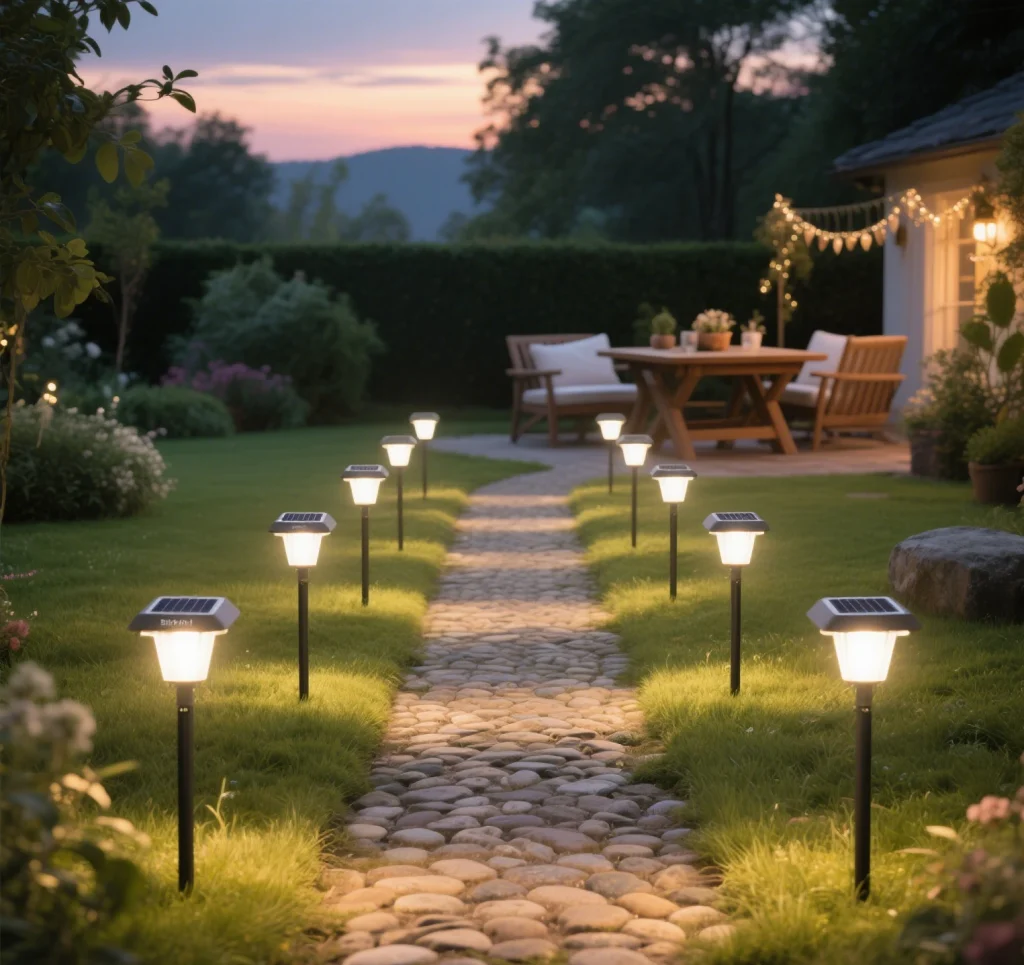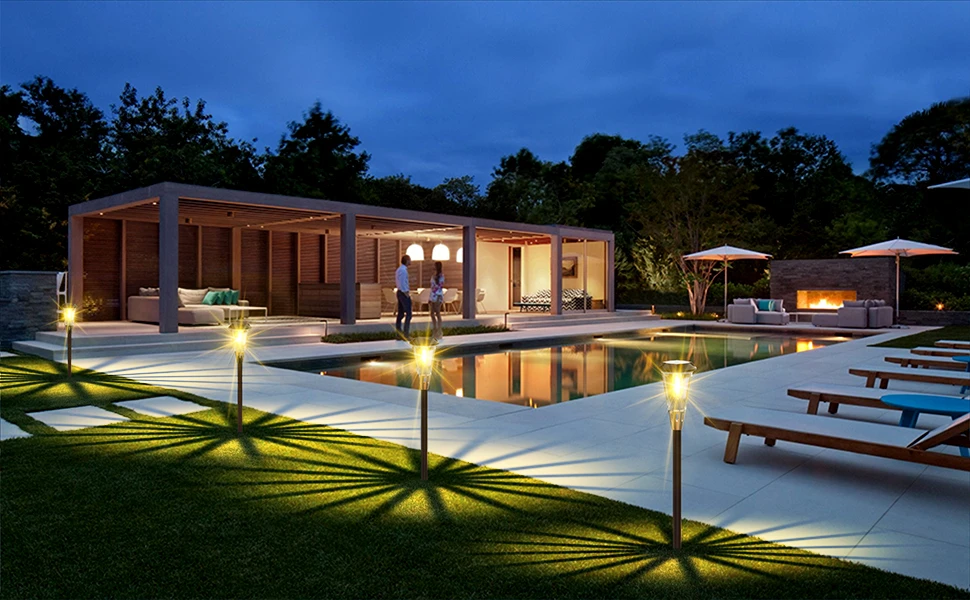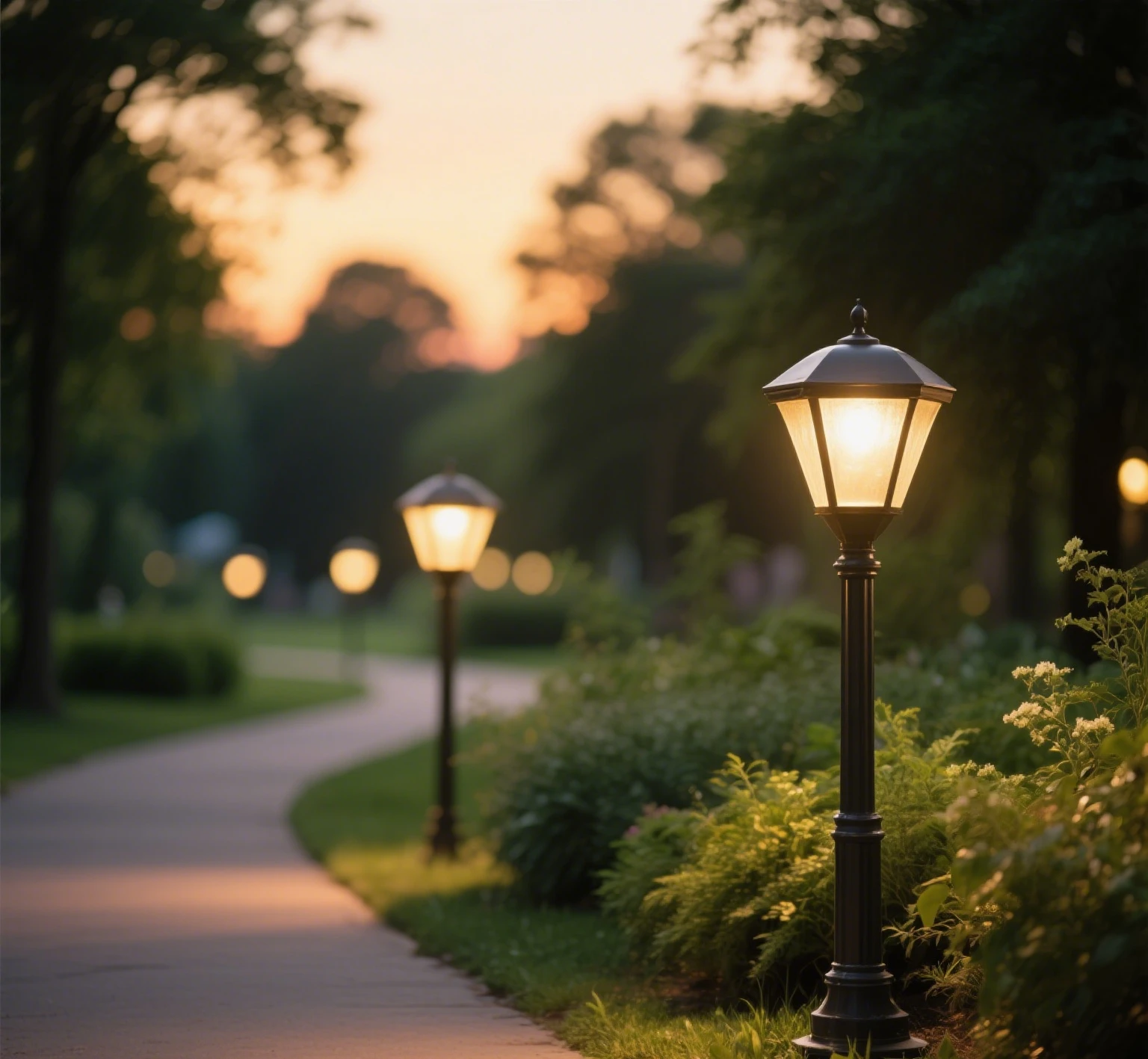Solar powered garden shed lights offer an eco-friendly, cost-effective way to illuminate outdoor sheds, enhancing functionality and aesthetics. These lights harness solar energy, eliminating the need for complex wiring or high electricity costs. This guide explores their core features, selection tips, optimization techniques, weather resilience, and advanced functionality to help you choose and use the perfect lighting solution for your shed.

Core Functionality of Solar Powered Garden Shed Lights
Defining the Illumination Range
Solar powered garden shed lights are designed to provide focused illumination for specific areas, such as workbenches, storage shelves, or entry points. The illumination range varies based on the light’s lumen output, typically between 100 and 1000 lumens for shed applications. For smaller sheds (up to 100 square feet), a single light with 200-400 lumens suffices for basic tasks like retrieving tools or navigating. Larger sheds (over 150 square feet) may require multiple lights or a higher lumen output (600-1000 lumens) for comprehensive coverage. Consider the beam angle as well—narrow beams (30-60 degrees) are ideal for task lighting, while wider beams (90-120 degrees) suit general illumination.
Matching Decorative Styles
These lights come in various designs to complement your shed’s aesthetic. Rustic sheds in places like Vermont or Colorado might pair well with lantern-style solar lights, which offer a vintage charm. Modern sheds in urban areas like Seattle or Austin could benefit from sleek, minimalist LED fixtures with clean lines. Some models feature adjustable color temperatures (warm 3000K to cool 6000K), allowing you to match the ambiance to your shed’s purpose—cozy for a reading nook or bright for a workshop. Selecting a style that aligns with your shed’s exterior or interior enhances visual appeal without sacrificing functionality.
Selecting Solar Powered Garden Shed Lights for Your Space
Matching Shed Structure and Installation
The structure of your shed dictates the installation method for solar powered garden shed lights. Wooden sheds with flat roofs are ideal for mounting solar panels directly on top, ensuring maximum sunlight exposure. Metal or plastic sheds may require adhesive mounts or freestanding panels placed nearby. Wall-mounted lights work well for sheds with limited roof space, while ceiling-mounted options suit taller structures. For sheds with windows, consider lights with detachable solar panels that can be placed outside to capture sunlight while the light remains indoors. Always ensure the panel’s cable length (typically 10-16 feet) accommodates your shed’s layout.
Choosing Brightness Based on Space Size
Space size directly impacts the brightness needed. A small 8×10-foot shed used for storage requires 200-300 lumens for safe navigation. A larger 12×16-foot shed used as a workspace may need 600-800 lumens to illuminate tools and work surfaces effectively. Check the light’s lumen rating and ensure it matches your shed’s dimensions. For multi-purpose sheds, opt for lights with adjustable brightness settings to toggle between low (100-200 lumens) for ambiance and high (500+ lumens) for detailed tasks like woodworking or gardening prep.
Optimizing Performance of Solar Powered Garden Shed Lights
Strategic Solar Panel Placement
The efficiency of solar powered garden shed lights hinges on optimal solar panel placement. Position the panel to face south in direct sunlight, avoiding shade from trees, fences, or buildings. In regions like Arizona or Florida, where sunlight is abundant, panels can be fixed at a 30-45 degree angle to capture maximum rays. In cloudier areas like Oregon or Maine, consider adjustable mounts to tilt the panel seasonally. Clean the panel monthly to remove dust or debris, ensuring consistent charging. If your shed is in a shaded area, place the panel in a nearby sunny spot, using the provided cable to connect it to the light.
Balancing Battery Life and Brightness Modes
Most solar shed lights feature built-in batteries (typically 2000-4000 mAh) that store energy for nighttime use. To maximize battery life, use lower brightness settings for routine tasks and reserve high-intensity modes for detailed work. Many models offer modes like dim (20% brightness, lasting 10-12 hours) or bright (100% brightness, lasting 4-6 hours). In winter, when daylight hours are shorter, prioritize dim modes to extend runtime. Some advanced lights include timers or motion sensors to conserve energy, automatically dimming when no activity is detected.
Ensuring Reliability in Challenging Weather
Protection Against Rain and Snow
Solar powered garden shed lights must withstand diverse weather conditions. Look for lights with an IP65 or higher waterproof rating to resist rain, snow, and humidity. In areas like Washington or Michigan, where heavy rain or snow is common, ensure the solar panel and light housing are sealed to prevent water ingress. Mount panels securely to avoid dislodging during high winds. After heavy snowfall, clear accumulated snow from the panel to maintain charging efficiency. Some models include drainage channels or UV-resistant coatings to enhance durability in wet climates.

Maintaining Performance in Low Temperatures
Cold weather can reduce battery efficiency, particularly in regions like Minnesota or Montana. Choose lights with lithium-ion batteries, which perform better in low temperatures than lead-acid alternatives. To maintain performance, store the battery above 32°F when possible, or select models with insulated battery compartments. If temperatures drop below 0°F, expect a 10-20% reduction in runtime. Regularly check connections for frost buildup, and consider insulating the panel’s wiring in extreme cold to prevent cracking. Pre-charging the battery during sunny days can also ensure consistent performance during cloudy or snowy periods.
Expanding Functionality for Enhanced Use
Leveraging Motion Sensor Modes
Many solar powered garden shed lights include motion sensors, which are ideal for hands-free operation. These are perfect for sheds used intermittently, such as for grabbing tools or seasonal storage. Motion sensors typically detect movement within 10-20 feet, activating the light for 20-60 seconds. For sheds near pathways in places like California or Georgia, set the sensor to low sensitivity to avoid triggering from passing animals or neighbors. Pair motion sensors with dim-to-bright modes to save energy, keeping the light off or dim until motion is detected, then switching to full brightness.
Multi-Light Layout Strategies
For larger sheds or multi-purpose spaces, a multi-light setup enhances coverage. Place one light near the entrance for safe entry and exit, and additional lights over key areas like workbenches or storage racks. In a 10×12-foot shed, two 300-lumen lights spaced evenly can provide balanced illumination. For seamless operation, choose lights with remote control or app-based synchronization, allowing you to adjust all units simultaneously. In sheds with multiple sections, consider zoned lighting—motion-activated lights for entryways and always-on lights for work areas. Ensure all panels receive adequate sunlight to maintain consistent performance across the system.
Conclusion
Solar powered garden shed lights offer a versatile, sustainable solution for illuminating your outdoor space. By understanding their core functions, selecting the right model for your shed’s structure and size, optimizing panel placement and brightness, ensuring weather resilience, and exploring advanced features like motion sensors or multi-light setups, you can create a well-lit, functional, and visually appealing shed. Whether you’re storing tools, working on projects, or creating a cozy retreat, these lights provide reliable performance with minimal environmental impact. Choose wisely, plan strategically, and enjoy a brightly lit shed tailored to your needs.


Leave a Reply